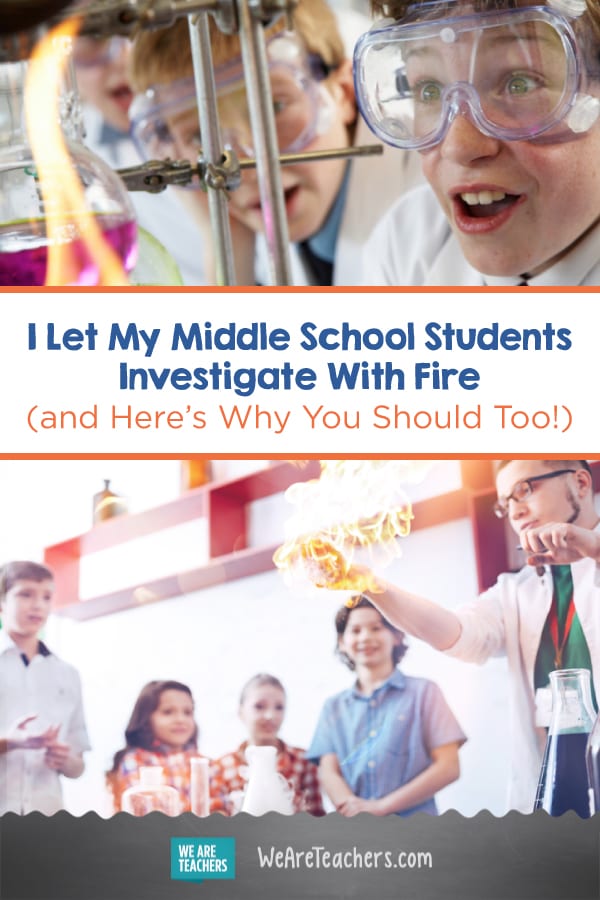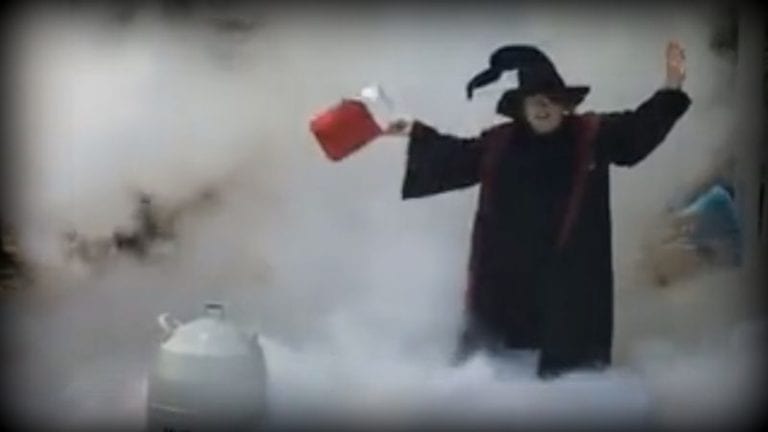For the longest time, my middle school students have begged me, “Can we please blow something up?” And my answer has always been, “No way. We can’t do anything that involves fire at school.” Then I stumbled upon some interactive fire-forensics STEM activities for middle school and decided to give them a try. My students couldn’t believe I was going to teach a lesson that involves fire in the classroom.
Honestly, I was pretty nervous. I don’t even have a science lab. Am I really going to let kids investigate with fire in my classroom? I imagined alarms blaring throughout the school and fire trucks racing to the scene.
Luckily, I found a module called Fire Forensics: Claims and Evidence from UL Xplorlabs, a set of free interactive online STEM modules that encourage students to think like scientists and explain real-world phenomena. Since the resources come from Underwriters Laboratories (UL), a global safety science organization, all of the activities are designed to be safe for classrooms when done as directed.
By far, this was my students’ favorite activity of the year. Not convinced you should let your middle school students investigate with fire? Here are seven solid reasons you should.
1. Kids are hooked from the get-go.
Let’s be honest, if you tell middle school students they get to investigate with fire at school, you’re going to capture their attention. The first Xtension, which is a hands-on lesson, was a low-stress way to build necessary foundational knowledge. Using a candle, we looked at the three variables needed to create fire—oxygen, fuel, and heat. Then we experimented with removing elements, one at a time. Next, we used a metal screen to look at a candle flame to observe combustion. The experiment really helped build my students’ confidence and motivated them to learn more.
2. It’s easier to implement than you think.
The Xplorlabs fire-forensics module includes various types of STEM activities for middle school.
First, there’s the online digital platform, which includes engaging videos and interactive tools. The module starts with the basics, as students build an understanding of fire science. They learn how to define fire, how it develops, and how the evidence left behind after a fire suggests its cause and where it started. The lessons build as students prepare for the culminating activity in which they identify and analyze fire scene evidence to make a claim, find and show evidence, and solve a fire-investigation case.
Then students do Xtensions to deepen their understanding through hands-on learning. During the experiments, students put fire-science principles they’ve learned into practice. Students use the scientific method to ask questions, make observations, collect and analyze data, develop and test hypotheses, and come to conclusions.
3. There’s barely any prep involved.
The entire unit is prepared by Xplorlabs. All I had to do was set up the technology for the online portion and gather materials for the experiments. The teacher guide provided a road map of the module and has everything you need: lesson plans, a safety guide, Next Generation Science Standards alignment, and rubrics. The Investigators Notebook provides students with reading passages that summarize concepts, reflection questions, and opportunities to make observations and record their thinking. The best part of the student guide is the section that takes an in-depth look at the scientific method in fire investigation.
4. It’s a model of cross-curricular learning.
The Fire Forensics module hits all the markers of STEM learning:
- Science: One of the most valuable lessons my students learned was the CER (claims, evidence, and reasoning) strategy. After building scientific background knowledge, they formulated a meaningful question, tested it, and applied reasoning based on their expertise. They then made a claim based on the evidence.
- Technology: Many of the interactive videos were filmed at the UL Fire Lab. My students were exposed to technology they didn’t even know existed as they observed the different ways in which scientists simulate and build fires.
- Engineering: Students were inspired to think about innovative solutions for real-world problems. What do we do about the fact that synthetic materials burn so fast? What else could we use? It also got them to think about design: How could we design furniture (and other things) so that, if they catch fire, they burn less rapidly?
- Mathematics: As part of their data collection, students learned to calculate surface-to-mass ratios and the heat of combustion.
In addition, I appreciated the inclusion of language arts. For each lesson, students synthesized the learning by writing logical, coherent reflections in their student notebooks.
5. Students make valuable real-world connections.
We learned that synthetic materials burn much faster than organics, which surprised my students. They also found out that almost everything we have in our homes is synthetic: couches, mattresses, etc. They had no idea how flammable furniture could be. In elementary school fire-safety classes, most students learned to keep doors shut in case of fire, but they had no idea why. Our Xplorlabs investigation on ventilation taught them the impact of outside air on the strength and speed of growth on fire. My students couldn’t wait to share this information with their families. It really sparked some good conversations and will hopefully result in changes at home.
6. It provides a spark of inspiration for the future.
I knew my students were really invested when they asked me to invite a fire investigator to visit our class. Many years ago, there was a fire in our town that basically burned down Main Street. Our experience with the Xplorlabs Fire Forensics module inspired students to want to hear a firsthand account of what happened. What type of evidence was collected at the scene? Why was the mystery never solved? I wouldn’t be surprised if this experience planted a seed for more than one of my students to pursue a future in firefighting or in fire investigation.
7. The experience will help you grow as an educator.
My biggest takeaway from teaching with the Fire Forensics module was to be willing to overcome my own fears and let my students explore. Investigating with fire isn’t that scary, believe it or not! The key is to teach the proper safety precautions and set clear expectations for taking the work seriously. Then just trust your students. I have to admit, I found out my students were much more responsible than I had initially given them credit.
Want to try these fire forensics STEM activities for middle school?
Are you ready to let your students investigate with fire? Check out the UL Xplorlabs’ Fire Forensics: Claims and Evidence module. Your students will gain a solid foundation of fire-science knowledge and will learn the skills to walk through a burn scene like an expert investigator. Working from end result to point of ignition, they will learn to hunt for clues, collect evidence, and make a claim to solve a fire mystery.
I can’t wait to let my students investigate with fire again. In fact, I’m already collaborating with another middle school teacher to teach the module next year.


